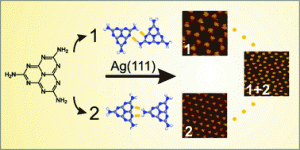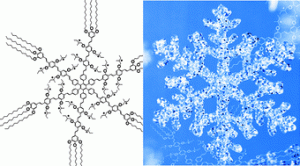
Zhi Zheng and co-workers from Central China Normal University made δ-Bi2O3 spheres, which became the reactive template to make the hierarchical ternary BiOI nest-shaped structures.
Read the full article for FREE to find out more…
Low temperature synthesis of δ-Bi2O3 solid spheres and their conversion to hierarchical BiOI nests via the Kirkendall effect
Manying Liu, Lizhi Zhang, Kewei Wang and Zhi Zheng
CrystEngComm, 2011, DOI: 10.1039/C1CE05101F












 In this HOT article, Babashkina and co-workers have synthesized the first examples of NiII complexes containing the same asymmetric NTT [(N-(thio)phosphorylated thioamides and thioureas RC(S)NHP(X)(OR0)2 (X ¼ O, S)] ligand featuring an aryl-NH substituent at the thiocarbonyl group and coordinating to the metal both in the 1,3-N,S- and 1,5-S,S’-fashion in the solid state depending on the crystallization conditions.
In this HOT article, Babashkina and co-workers have synthesized the first examples of NiII complexes containing the same asymmetric NTT [(N-(thio)phosphorylated thioamides and thioureas RC(S)NHP(X)(OR0)2 (X ¼ O, S)] ligand featuring an aryl-NH substituent at the thiocarbonyl group and coordinating to the metal both in the 1,3-N,S- and 1,5-S,S’-fashion in the solid state depending on the crystallization conditions. Song Gao and colleagues from Peking University investigate a way of improving the chances of obtaining chiral crystalline solids, in this CrystEngComm Hot article.
Song Gao and colleagues from Peking University investigate a way of improving the chances of obtaining chiral crystalline solids, in this CrystEngComm Hot article.
 In this HOT article, the solid-state interactions of dibenzophosphole chalcogenides and their potential application as electron transporting materials were investigated. The crystallographic properties of 9-phenyl-9-dibenzophosphole chalcogenides were compared with the mixed crystal structure and optical properties of 9-phenyl-9-dibenzophosphole sulphideselenide. The mixed crystal displayed desirable properties, i.e. carrier transport and emission properties, and this approach may be useful in the future for optoelectronic applications such as light-emitting SC-OFETs
In this HOT article, the solid-state interactions of dibenzophosphole chalcogenides and their potential application as electron transporting materials were investigated. The crystallographic properties of 9-phenyl-9-dibenzophosphole chalcogenides were compared with the mixed crystal structure and optical properties of 9-phenyl-9-dibenzophosphole sulphideselenide. The mixed crystal displayed desirable properties, i.e. carrier transport and emission properties, and this approach may be useful in the future for optoelectronic applications such as light-emitting SC-OFETs![2,3-bis[(E)-4-(diethylamino)-2-alkoxybenzylideneamino]fumaronitrile derivatives](http://pubs.rsc.org/services/images/RSCpubs.ePlatform.Service.FreeContent.ImageService.svc/ImageService/image/GA?id=C1CE05198A) Scientists from Japan and China have investigated the crystal structures of bisazomethine dyes in this CrystEngComm Hot article.
Scientists from Japan and China have investigated the crystal structures of bisazomethine dyes in this CrystEngComm Hot article.

 James D. Wuest and co-workers from the University of Montréal, Canada, look at crystalline amino-substituted azines in this CrystEngComm Hot article.
James D. Wuest and co-workers from the University of Montréal, Canada, look at crystalline amino-substituted azines in this CrystEngComm Hot article.